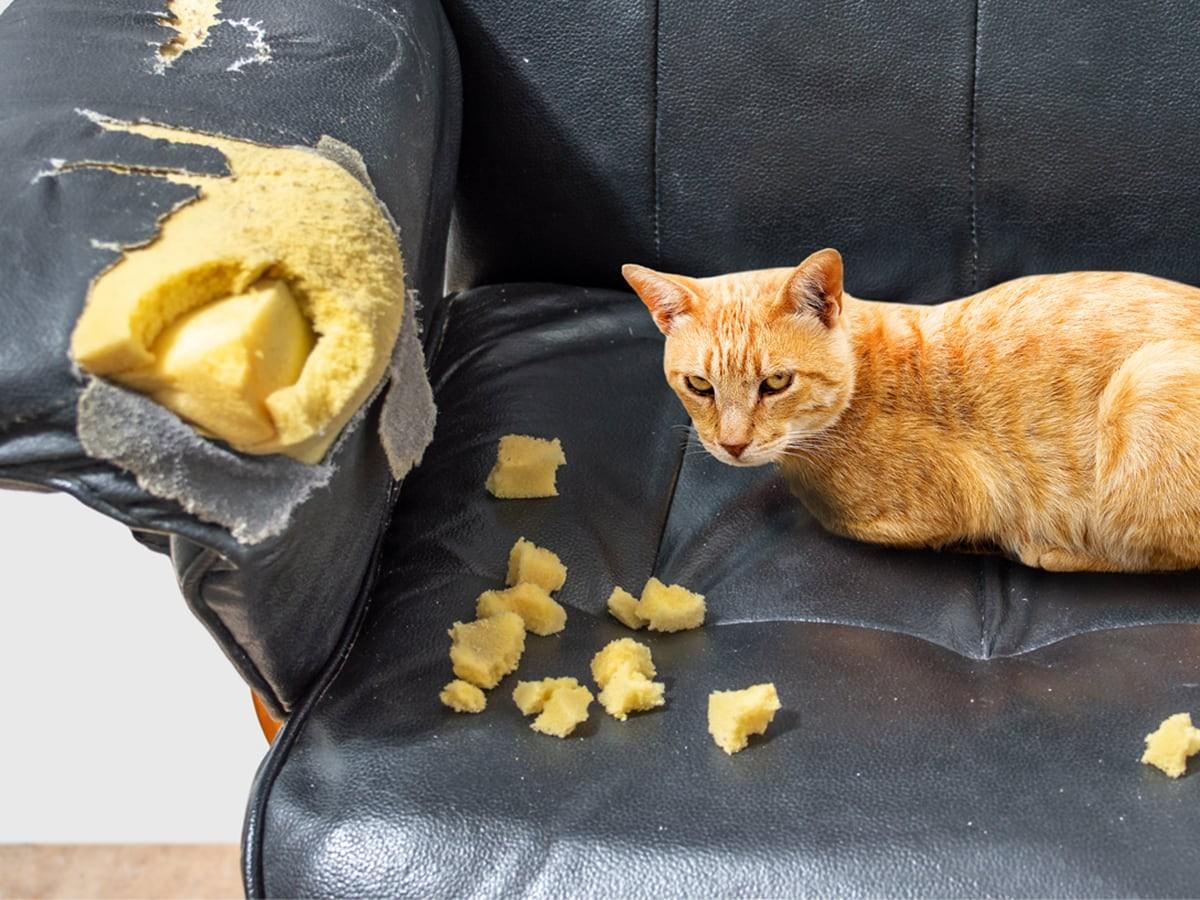When you run into a feral cat, you may want to try to tame them and help them transition into the life of domestication. However, taming a cat can be easier said than done if you don’t know how to do it properly. Fortunately, we’ve got all the information you need on how to tame a cat the right way!
What Are Feral Cats?
A feral cat is a cat that has had no experience with humans and instead has spent its entire life in the wild. Sometimes, feral cats have had some human interaction, but it was negative interaction. There are also semi-feral cats, which have had some positive interaction with humans, though very little.
Some signs that a cat may be feral include:
Avoiding or hiding from humans
Being part of a colony of cats
Walks low to the ground
Doesn’t meow much
Won’t make eye contact
Almost always only out at night
It’s important to know that feral cats are not the same as stray cats. Many stray cats are friendly because they lost their home for one reason or another, but they have spent a decent amount of time in the presence of humans. For the most part, an abandoned cat won’t need to be tamed, but feral and semi-feral cats will.
Steps to Taming a Feral Cat
In order to try to tame a cat, it’s important to take the right approach and not rush the steps. Here are some tried and true ways you can work to tame a cat!
Give the Cat Control
As hard as it may be, ignoring the cat can be a great first step toward taming them, especially if the cat is semi-feral. Ignoring the cat while nearby gives them the power of being in charge of the situation, allowing them to make the first move. Another great aspect of this is that it will help you determine whether the cat is willing to be domesticated. Experts say that cats choose to be domesticated out of their own desire, not our pursuit.
Bring a Toy Along
Much like your cats at home, these feral and semi-feral cats enjoy interactive play. When you visit your new friend, bring along a laser pointer or a feather toy to allow you to interact with them from a safer distance. When cats aren’t domesticated, it’s important to stay safe when interacting with them, especially during the early stages. However, bringing these toys can help you close the distance, literally and figuratively.
Take it Slow
When cats aren’t used to humans, having too much interaction with them at one time can be overstimulating and end up turning them away from you. Instead, ease them into the experience of being around people. Don’t be overly noisy or use a booming voice around them as they are getting acclimated to being around you.
Remember You’re Their Visitor
When you are going by and visiting with your potential cat, you need to be respectful of their space. Allow the cat to have the freedom to run around, use the bathroom, eat, and groom without interfering. Sometimes simply being near the cat regularly can help desensitize them to you.
Can All Cats Be Tamed?
There are a lot of factors that go into whether a cat can be tamed. Sometimes their personality will determine whether they can ever be fully domesticated. Some feral cats will simply want to stay wild; it’s our job to respect that. However, semi-feral cats or much younger cats have much higher chances of being tamed or domesticated with the right steps.
Other Ways to Help Feral Cats
Because older feral cats may never be domesticated, you may be wondering what else you can do to help them out. Fortunately, there are a few things you can do to help them!
Care for a Cat Colony
If you find that a feral cat colony lives near you, consider becoming their caretaker. If you have the time and means needed, you can help provide food, shelter, and health care for the colony of cats. These gifts can help the feral cats live much better and longer lives than they would without a caretaker. Contact your local shelter or an animal rescue to get information on how to get started!
Trap Neuter Release (TNR)
One of the best things that can be done for the feral cat population is to help slow down its growth. One of the most popular and effective ways of doing that is Trap Neuter Release, or TNR. When done properly, TNR humanely traps feral cats, allowing them to go to the vet to get spayed or neutered as well as vaccinated. After making it to the vet, the cat will receive a small “ear tip” to signal that they don’t need to be taken back in unless they are ill.
Because not every cat will allow itself to be domesticated, taking them all off the street simply isn’t possible. However, TNR helps lower the number of kittens born each year, lowering the feral population over time. Plus, it allows feral cats to be healthier, living much more enjoyable lives!
How Long Does It Take to Tame a Cat?
When taming a kitten, it can take around two weeks on average to get them fully tamed. However, this amount of time can vary based on their previous experiences with humans and their overall personality. With older cats, it can take much longer, even months. Again, older cats who have had little to no exposure to humans may never be fully tamed.
How to Decide Whether You Should Tame a Cat
After you’ve found a cat, you need to determine whether it’s worth it to try to tame it. First, consider the age of the cat. Trying to tame a cat for more than a couple of months can be very stressful for both of you. It may not be a great idea to try to tame an older cat. However, if you’ve come across a cat who will need medical care, the age may not matter as much as their health priority.
It’s also important to determine what you will do with the cat once you tame it. If you’re taming the cat so you can take them into your home as a part of your family, then that risk is one that is for you to determine. However, if you’re going to need to find the cat a home, you need to consider the difficulty of that as well. Kittens tend to be much easier to adopt than adult cats, so that is something to consider.
Again, taming a cat isn’t always the best idea for the cat, depending on their unique situation. However, if you grow attached to a cat that doesn’t want to be tamed, you can still provide them with their basic needs in order to make sure they live a long and healthy life in the environment of their choice!
Takeaway
Taming cats can be a time-consuming and frustrating process, but it’s not impossible. When determining whether to tame a cat, consider their age and overall personality. From there, take the taming process slow and patiently, allowing the cat to have control. If you choose not to tame a feral cat, you can still offer them food and shelter by becoming their caretaker! No matter which route you take, it’s important to make sure the cats around you are living their happiest life possible!

As Spot’s resident cat enthusiast, I am dedicated to researching and sharing information that helps pet owners take the best care of their pets. Pet ownership comes with it’s share of challenges, but my goal is to help make this journey easier.












